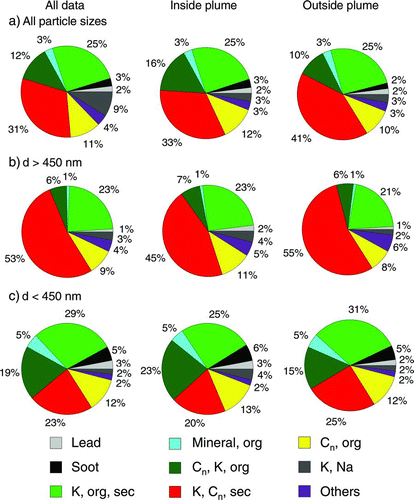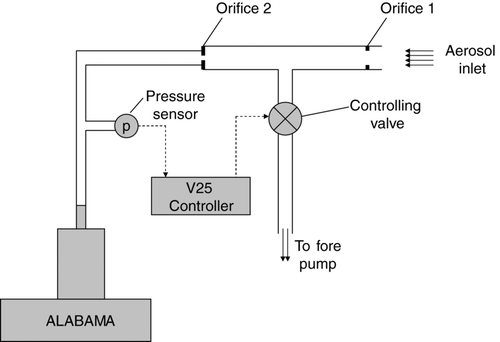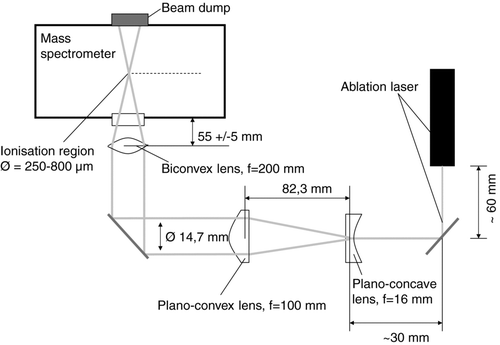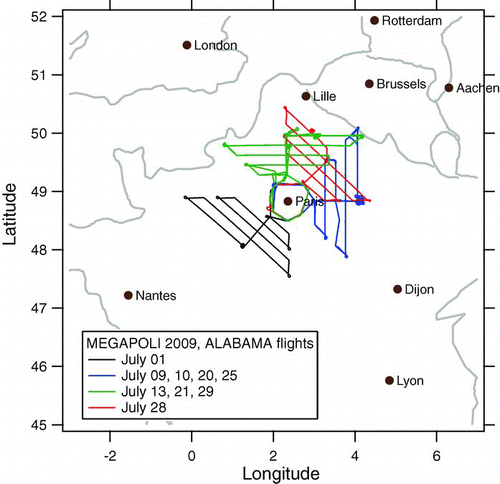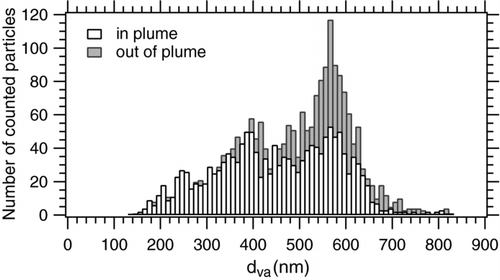Figures & data
FIG. 1 Left: photograph of the ALABAMA rack. Main components are labelled. Right: schematic of the vacuum chamber section including aerodynamic lens, detection and sizing region and mass spectrometer. TMP: turbomolecular pump.
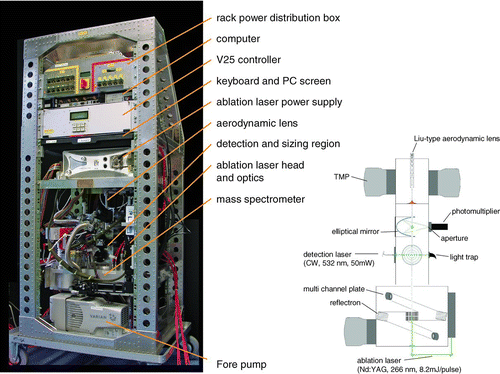
FIG. 3 Drawing of the detection system of the scattered light using an elliptical mirror. F1, F2: focal points, PMT: photomultiplier tube. The detection laser hits the particle in the first focal point. The light scattered into the range between –R° and +F° is detected by the PMT behind the second focal point. The angular range –R° and +F° is axis-symmetric with respect to the axis F1 – F2.
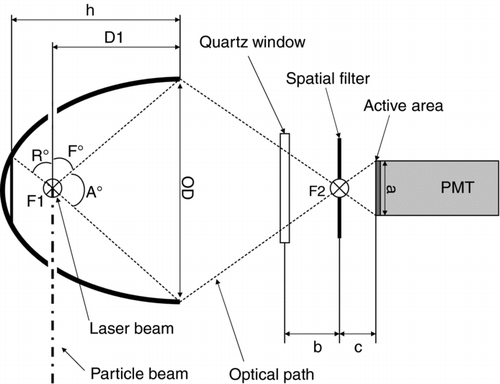
FIG. 7 Detection efficiencies for several particles types and diameters. (Error bars: counting statistics.)
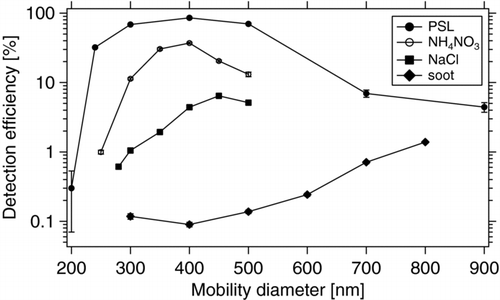
FIG. 8 Particle beam axis position for different particle types and diameters (Error bars: counting statistics.)
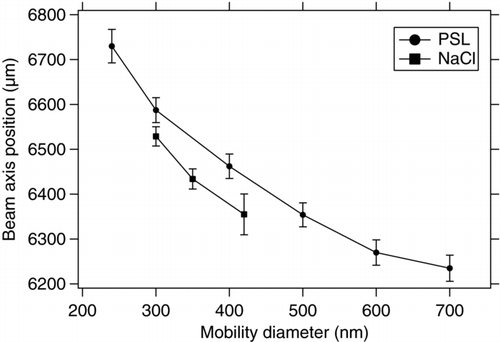
FIG. 9 Ablation efficiency for PSL and NaCl at two different laser ablation focal diameters (280 and 700 μm).
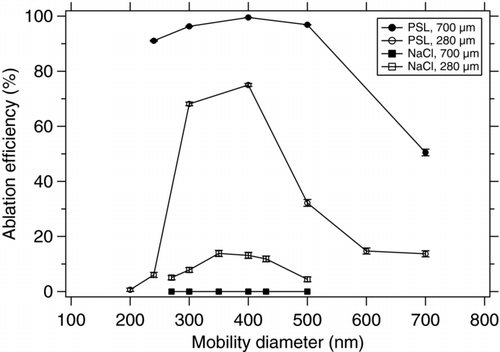
FIG. 10 Excerpt of a mass spectrum of a single PSL particle, coated with lead acetate (Pb(CH3COO)2). The three isotopes of lead at m/z 206, 207, and 208 are clearly separated.
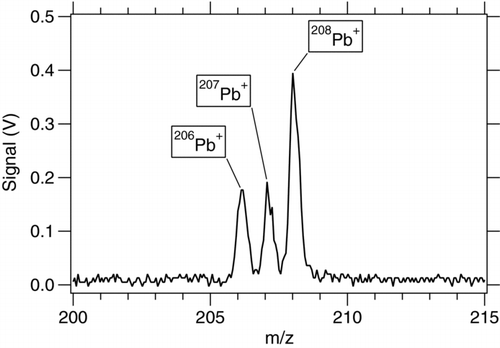
FIG. 11 Example mass spectra for various organic and inorganic aerosol particles. Left: positive ions, right: negative ions. (a) 1,4-Benzenediamine (p-Phenylendiamine), (b) acetic acid, (c) ammonium nitrate, (d) ammonium sulfate.
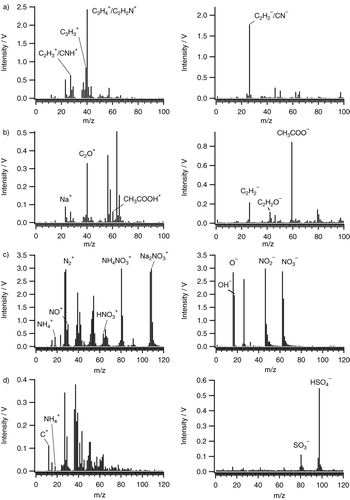
FIG. 12 ALABAMA ablation efficiency and vertical aircraft acceleration during measurement flight on 1 July 2009.
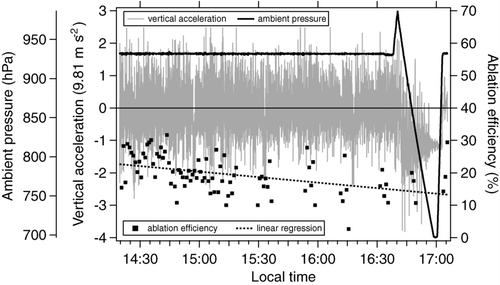
FIG. 14 48 h backward trajectories, calculated with HYSPLIT, end point Paris, 800 m above ground. End times: 6:00, 9:00, 12:00, 15:00, and 18:00 (UTC) for each flight day.

FIG. 15 Typical single particle mass spectra for the eight major particle classes. Peaks used for the classification are marked.
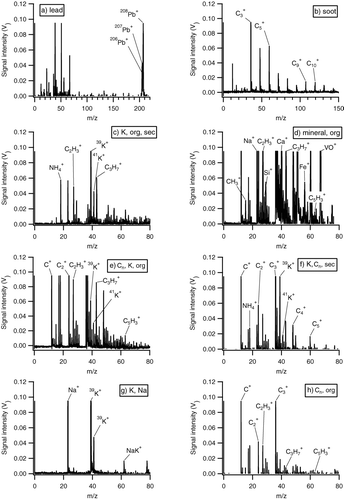
TABLE 1 Characteristic peaks for the eight identified particle classes
FIG. 16 Relative (and absolute) abundance of particle classes during all flights that sampled air from the Paris megacity area (left) and during the flight on July 1 when air masses arrived from North-East (right).
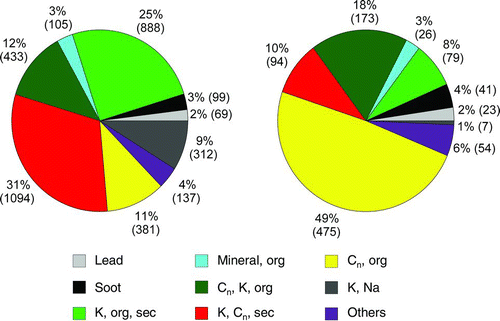
FIG. 18 Relative abundance of particle classes for flights sampling the Paris plume. Left: complete data set, middle: inside plume: right: outside plume. (a) all particle sizes, (b) d > 450 nm, (c) d < 450 nm.
